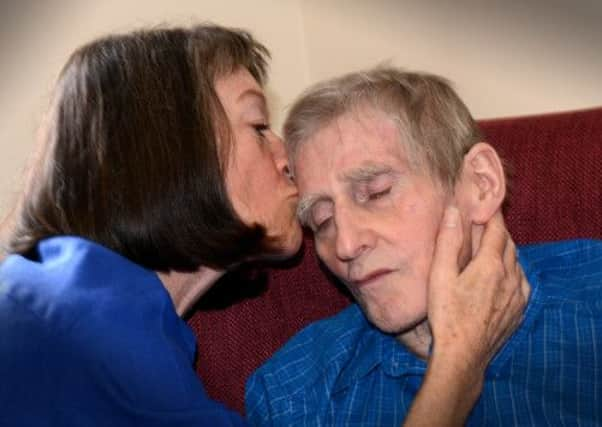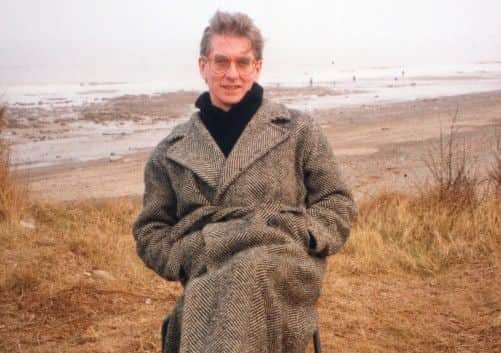Movement to change minds that could help foster a new spirit of community


My husband and I have been living with his dementia for many years now.
He has the most common one, Alzheimer’s Disease, with a component of Lewy Body dementia which can add rapid onset of symptoms, seizures, and hallucinations to the potential mix.
Advertisement
Hide AdAdvertisement
Hide AdThere are hundreds of different dementias which all follow a similar path to eventual death, but vary widely in their detail. When Barry first became ill I made efforts to raise awareness of the disease and the importance of raising funds for research; not for him, but for the thousands of others who are developing it every year.


Alzheimer’s Society research shows 800,000 people in the UK have a form of dementia; more than half have Alzheimer’s disease. In less than 10 years a million people will be living with dementia.
To bring this closer to home, these are the latest NHS statistics for our area: North Yorkshire and Humberside: 23,644, expected to rise to 24,612 by 2015; South Yorkshire and Bassetlaw: 17, 965, expected to rise to 18,701 by 201; West Yorkshire: 25,676, expected to rise to 26,715 by 2015.
My efforts at raising awareness were a waste of time, the Press only seemed interested in how violent my husband was, or whether he still knew me. The shining exception was Nick Ahad from the Yorkshire Post, who wrote a very compassionate and touching piece in 2009.
Advertisement
Hide AdAdvertisement
Hide AdAt the time, I was upset to find the reactions I did, to a diagnosis of dementia. The majority of people shrink away, and offers of help are not forthcoming. It is as if the sufferer is already dead.
With others in my situation, I have often discussed the reactions we have had from our communities and others; and we all agree that times have been hard, bleak, and lonely; ‘friends’ vanished, people crossed the street, and teenagers jeered.
We grieved and became depressed, angry, paranoid and ill and eventually developed a ‘them-and-us’ stance. Of course, there are some lovely people who would like to offer support, but they had no idea what to do or say.
I am not able to imagine what this distress and alienation is like for a person who is very elderly or lives alone with dementia, maybe with no relatives nearby.
Advertisement
Hide AdAdvertisement
Hide AdI must thank a few people, though: Val and Pete, Wendy, Shaz in the Co-Op, and the unknown man, loaded with shopping, who followed us for ages one afternoon, because, it turned out, he feared for my life…
I think that the way in which the majority of people regard and treat dementia sufferers and their carers must be caused by a mixture of ignorance, embarrassment, and fear.
It is not long since cancer was the same, it was a killer, and even the word was taboo; referred to as ‘The Big C’ by almost everyone.
However, following huge fundraising efforts for research, and medical advances, cures are common now, and the fear and stigma have largely gone. I hope that dementia will follow the same course, sooner rather than later.
Advertisement
Hide AdAdvertisement
Hide AdIn addition to the lack of understanding, the communities we all grew up in, particularly in working class areas, are not the same. Villages and towns formed around industries and concerns which employed local people at all levels and created a bond between them, at work and at home.
Generations were born there, and neighbours kept an eye out for the elderly and vulnerable, because they knew them, even in towns. It was unknown for someone to die and lay unfound for months, as is not infrequent now. That cohesion has gone; there are no more pit villages, cotton towns etc.
The nature of work has changed, people are diverse, moving in and out, following jobs, and rarely put down roots or go ‘callin’. Even the pubs are closing down. Ironically, country estate villages seem to thrive. Two-thirds of dementia sufferers are cared for in their community, and, not surprisingly given the evident fear, lack of public awareness, and changes in society.
A recent Alzheimer’s Society report finds that three in five of them feel anxious, depressed, and have ‘lost friends’, with 71 per cent saying that they would like their community to understand how to help them to live well; It seems that now is a crucial time, the stage is set, for the establishment of Dementia Friendly Communities.
Advertisement
Hide AdAdvertisement
Hide AdI was deep in my own misery, and hardly noted the Prime Minister’s ‘Challenge on Dementia’ when he announced it in 2012, I thought it was the usual lip-service sop for votes, but then, when I was asked to write this piece and did a bit of research I was amazed at the progress and real work which has taken place in the interim.
The ‘Challenge on Dementia’ was launched with a series of promises for action; one of them is the creation of dementia-friendly communities. A national group now meets regularly to work out how to develop these communities, with the Alzheimer’s Society raising awareness, and the Government taking the lead on funding and research.
Other promises are that by 2015 up to 20 cities, towns and villages will have signed up to become dementia friendly, there will be support from businesses, and an awareness-raising campaign.
But what is a dementia friendly community? It is a place where the residents show awareness and understanding so that those living with dementia, and their carers, are, and feel, encouraged by the community to remain independent and to have more choice and control over their lives.
Advertisement
Hide AdAdvertisement
Hide AdAlzheimer’s Society is helping with this by gathering information on the best way to achieve this awareness, improvement and inclusion. They are recruiting ‘Dementia Friends’, volunteers of any age who will make a positive difference to people living with dementia by giving them information and practical help.
Anyone interested can register to be a Dementia Friend and can attend free sessions run by the Alzheimer’s Society and others to find out more about what it’s like to live with dementia, and then they can turn that understanding into action and encouragement in their local communities.
The Alzheimer’s Society aims to give a million people a better understanding of dementia by 2015, and these courses are being rolled out all over the country.
They provide information and resources to help to understand all the issues and how to answer people’s questions. For details of the scheme and the training courses, go to www.dementiafriends.org.uk, You can register your interest online and find details of training sessions, or ask at your local Alzheimer’s Society. I have just looked, and there is a session in Leeds on September 12, with lunch and refreshments, 10am to 4pm, only three places left, and there are lots more.
Advertisement
Hide AdAdvertisement
Hide AdLocally, there is great work already being done in Leeds, York, Bradford and Sheffield. For example, one man in Leeds has dedicated himself to turning a suburb into the city’s first “dementia friendly” area, in memory of his mother.
While action is taking place all over the country, people are realising that anything which improves the quality of life of people living with dementia and their carers will be good for everyone, including the community itself.
This movement has the potential to bring back the old ‘community spirit’ with everyone working together to improve each other’s lives, and looking out for their neighbours. It will make people proud of themselves and where they live, and will break down barriers; dementia touches everyone at some point, regardless of race, class or colour.
Those with a diagnosis of dementia will be freed from the burden of stigma, fear, and isolation which has accompanied the disease for so long, and will live longer, more content and useful lives.
Advertisement
Hide AdAdvertisement
Hide AdIt’s too late for Barry and me, but hopefully, soon, people will never again look away, cross the road, or feel unable to help. Dementia Friendly Communities really are important! I wish that this scheme had been around to help us; it will help so many in the future, with the help of Yorkshire Post readers.
From surveyor to author
Barry Hines was born in the mining village of Hoyland Common near Barnsley.
While his first job was as an apprentice mining surveyor at Rockingham Colliery, words were always his first love. In 1968 his novel A Kestrel for a Knave was published and the following year the book was adapted for the film version Kes, directed by Ken Loach.
Barry also wrote the script for Threads, the 1984 television drama which examined the effects of nuclear war on Sheffield.
Advertisement
Hide AdAdvertisement
Hide AdHaving being diagnosed with Alzheimer’s, the disease also soon robbed him of the ability to write, but he remained defiant, telling the Yorkshire Post in 2009, “I just get on with things. I don’t mess about.”